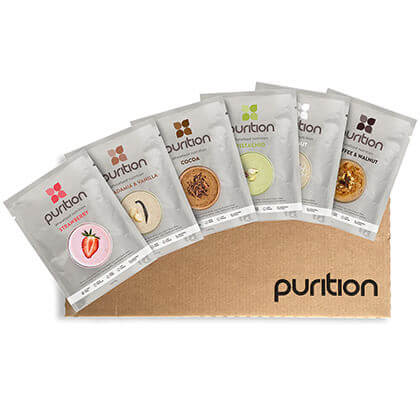A guide to the paleo diet

There is no doubt that there is a huge disconnect between what we eat today and what our ancestors evolved to eat.
At its core, the paleo diet simply promotes a simpler, less processed, whole food diet. It’s a compelling argument given the current crisis in healthcare and it’s clear something has to change!
What is the paleo diet?
Paleo diet advocates promote the idea that our diets have changed too quickly for our genes to keep up, and the result is a plethora of diet related health issues including elevated blood pressure, high blood sugar level, obesity and abnormal cholesterol levels caused by eating foods our bodies have not evolved to eat.
A paleo diet typically includes meats, fish, fruits, vegetables, nuts and seeds and very little else – foods that in the past could be obtained by hunting and gathering.
There is some evidence that following this diet may lead to improvements in terms of body composition and metabolic effects compared with the typical Western diet or compared with diets recommended by national nutritional guidelines.
Be flexible...
A paleo diet often excludes dairy products, legumes and grains on the basis that these foods only became common when farming emerged about 10,000 years ago and it’s easy to criticize the paleo diet for this because dietary flexibility is a hallmark of humanity.
From near-polar latitudes to the tropics, our ancestors' diets varied over millennia as the world changed and we adapted to a remarkable variety of habitats and dietary versatility and find something to satiate us.
But if you use the idea behind the paleo diet to help you remove ultra-processed foods from your diet, many people experience significant health improvements, weight-loss and increase in energy compared to the typical western diet or flawed national nutritional guidelines.
Using the paleo concept in this way is neither a fad or dangerous. Eating more whole / real foods and less ultra processed food is good for your health. If the paleo diet helps you navigate towards foods that have been grown or reared outside and can be eaten without the need for ultra processing, then we say the Paleo diet and it’s namesakes are a powerful tool to help people transition to a healthier way of life.
Is Purition paleo friendly?
We believe the best foods you can eat are those that grow naturally above ground and can be eaten at source straight out of the field. In fact, 70% of the ingredients which go into every pouch of Purition are nuts and seeds – the kind of food our hunter-gatherer ancestors thrived upon daily.

We’re fairly certain meat was probably a luxury back then and any hunting trip was most likely fuelled by a big handful of nuts, which are high in energy and minerals. Purition it seems is an almost perfect match for the paleo/primal dieter.
The closer to nature, with the least amount of processing and cooking, means more natural nutrition – just like the ingredients found in Purition. We use chopped or ground seeds and nuts instead of highly refined and ultra processed powders to deliver to our customers the best paleo and primal inspired blends.
But what about the dairy content?
Well, firstly the dairy content of our shakes is extremely low compared to all the other natural ingredients so don’t dismiss it before you’ve taken a closer look. Whilst the paleo diet advocates dairy-free, you can’t ignore the fact that every diet can be improved upon.
The reality is that we can never replicate a precise stone age diet, least not because we know there is not one single diet to replicate. Food choice today remains about what is available to be eaten, foods available to our ancestors varied over time as the world changed around them from warm and wet to cool and dry and back again. Those changes are what drove our evolution.
Ever-changing diet
Because our world was ever changing, so, too, was the diet of our ancestors. Focusing on a single point in our evolution would be futile as those living in the forest by the river surely had a different diet from their cousins on the lakeshore or the open savanna.
Recent hunter-gatherers who inspired paleo diet enthusiasts such as the Tikiġaġmiut of the north Alaskan coast who lived almost entirely on the protein and fat of marine mammals and fish, whereas the Gwi San in Botswana’s Central Kalahari took something like 70 percent of their calories from carbohydrate-rich, sugary melons and starchy roots.
Traditional human foragers managed to thrive in a remarkable variety of habitats, from near-polar latitudes to the tropics. Few other mammalian species can make that claim; and there is little doubt that dietary versatility was key to this success. Dietary flexibility is a hallmark of humanity!
Read more...
New to Purition? Tips for newbies
How to use Purition for weight loss
Simple swaps
Healthy eating: Form the foundation
What you should do next...
1. Subscribe to our newsletter
Subscribe to our newsletter for the latest news, recipes and advice about healthy eating.
2. Try Purition for 14 days
Unlock all the benefits of a whole foods diet with none of the effort. Get 2 weeks of easy nutritious meals & pick your own flavours!


